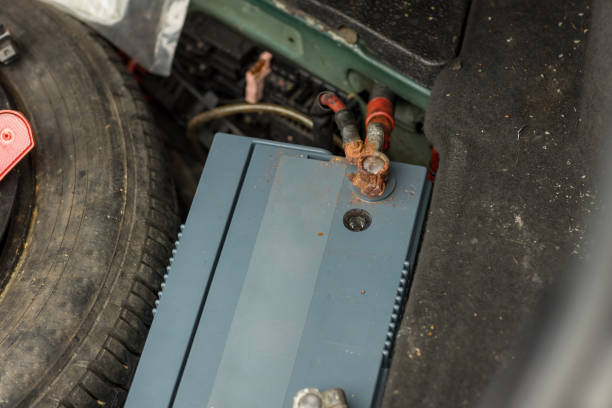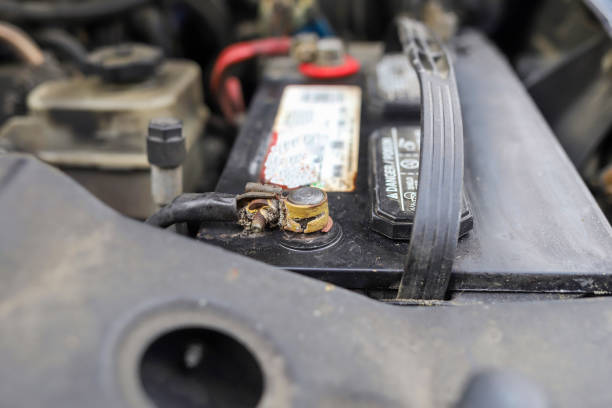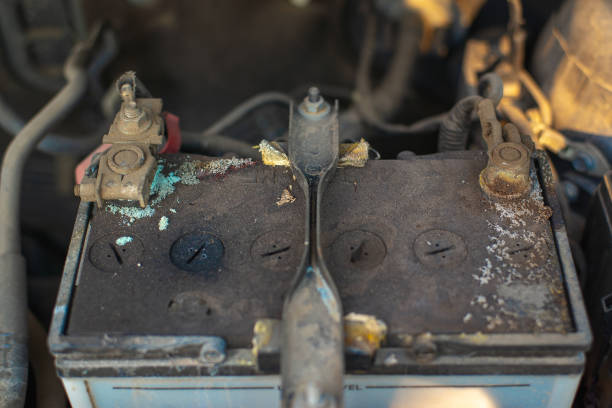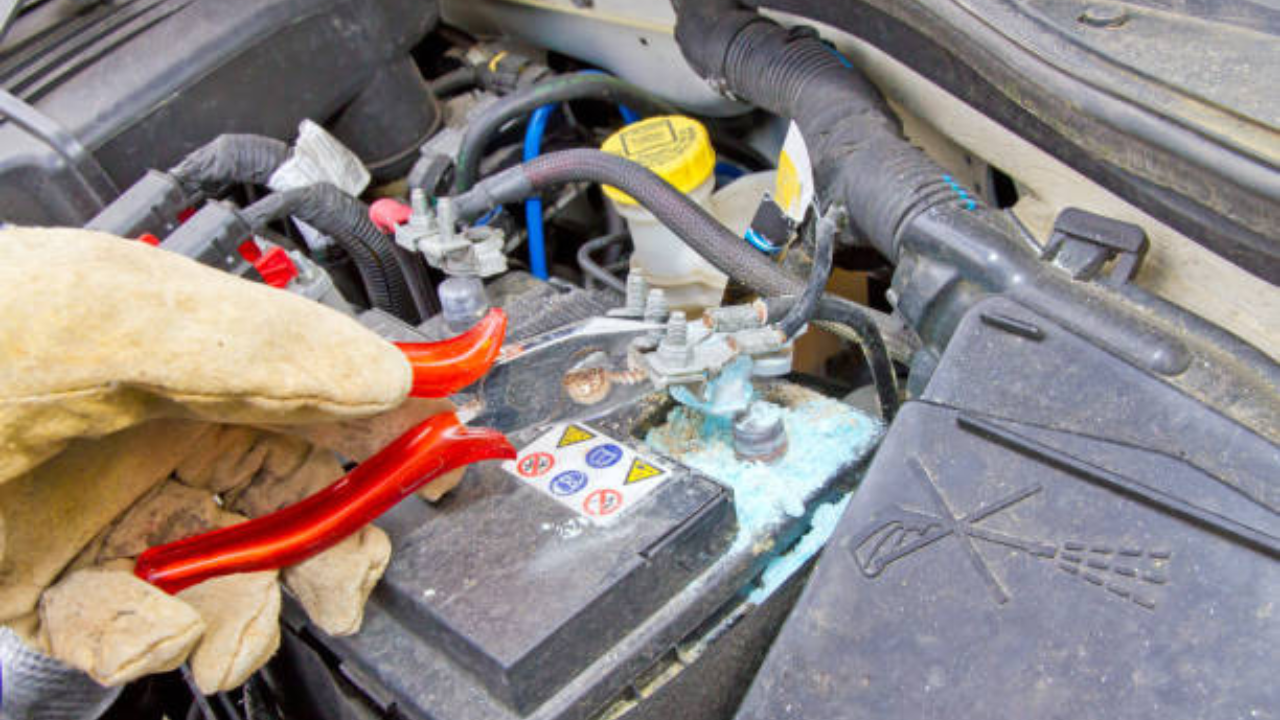Car battery keeps dying? Here’s why and what you can do to fix it.
If your car battery keeps dying, it can be frustrating and inconvenient. You may find yourself stranded or constantly needing jump-starts. Understanding the reasons behind a dying car battery is essential in finding a solution.
Several factors can contribute to this issue, including a faulty alternator, loose or corroded battery connections, or excessive power drain from electronics.
To fix the problem, inspect and clean the battery connections, ensure proper alternator functioning, and minimize electricity usage when the car is parked.
Regular maintenance, such as checking fluid levels and replacing old batteries, can help prevent further issues. By taking these steps, you can address the problem and avoid future battery failures.
Understanding The Issue
Car battery issues can be frustrating and inconvenient, especially when your battery dies without reason. Understanding the issue is the first step toward finding a solution.
By identifying the problem and familiarizing yourself with the common causes of battery drain, you can take the necessary steps to prevent future battery failures and ensure that your car starts up reliably every time.
Identifying The Problem
Identifying the problem is crucial in resolving a recurring dead battery. Several signs can indicate issues with your car’s electrical system:
- The engine struggles to start or fails to start altogether.
- Dashboard lights are dim or flickering.
- The battery warning light is illuminated on the dashboard.
- Your car requires a jump-start frequently.
If you’re experiencing any of these signs, it’s essential to investigate further to determine the exact cause.
Common Causes Of Battery Drain
Several common causes of battery drain could be responsible for the recurring dead battery. By identifying these causes, you can take appropriate measures to prevent further battery failures. Here are some possible culprits:
Parasitic Drain
Parasitic drain refers to the continuous power draw even when the car is turned off. This can occur due to various components, such as the radio, interior lights, faulty alternator, or a short circuit. Identifying the source of the parasitic drain may require the assistance of a professional mechanic.
Faulty Battery
A faulty battery can result in frequent dead battery issues. If your car battery is old, worn out, or damaged, it may not hold a charge effectively, leading to repeated failures. Testing the battery’s voltage and capacity can help determine if a replacement is necessary.
Charging System Problems
A malfunctioning charging system can prevent the battery from charging correctly. This might be due to a faulty alternator, a loose or worn-out serpentine belt, or corroded battery terminals. Regular maintenance and inspections can help identify and resolve any charging system problems.
Electrical Component Malfunctions
Faulty electrical components, such as a malfunctioning starter motor, alternator, or ignition switch, can drain the battery power. If these components do not function correctly, they may draw excess power even when the vehicle is not used. Proper diagnosis and repair of these components are necessary to prevent battery drain.
Understanding and identifying the issue is crucial in addressing your car’s recurring dead battery. By familiarizing yourself with the common causes of battery drain, you can take appropriate actions to avoid future battery failures and ensure a reliable start for your vehicle.

Diy Revival Techniques
Have you ever experienced a situation where your car battery keeps dying, leaving you stranded? It can be frustrating and inconvenient, especially when you’re in a hurry or far from a mechanic.
However, there are a few DIY revival techniques that you can try before resorting to professional help. This article will explore some simple yet effective steps to revive a dead car battery.
Charging The Battery
One of the first and easiest steps to try when your car battery dies is charging it. You will need a compatible charger and access to an electrical outlet to charge the battery. Follow these steps to charge your car battery:
- Ensure the ignition and all electronic devices are turned off.
- Locate the positive and negative terminals on the battery.
- Connect the charger’s positive cable (usually red) to the positive terminal.
- Attach the negative cable (usually black) to the negative terminal.
- Plug the charger into the electrical outlet.
- Set the charger to the appropriate voltage and amperage for your battery.
- Allow the battery to charge for the recommended time (check the charger’s manual for specific instructions).
- Once fully charged, detach the cables in the reverse order (negative first, then positive).
Cleaning The Connections
Dirty or corroded connections are another common issue that can cause a car battery to die. Over time, dirt, grease, and corrosion can accumulate on the battery terminals, hindering proper electrical flow. Follow these steps to clean the connections:
- Gather the necessary tools: a wrench, battery cleaner or a mixture of baking soda and water, a wire brush, and gloves.
- Put on the gloves to protect your hands.
- Loosen the nut on the negative terminal and remove the cable using the wrench.
- Repeat the previous step for the positive terminal.
- Dip the wire brush into the battery cleaner or baking soda mixture.
- Gently scrub the terminals and cable ends to remove any residue or corrosion.
- Rinse the terminals and cable ends with clean water.
- Dry them thoroughly with a clean cloth or allow them to air dry.
- Reconnect the positive terminal and the negative terminal, securely tightening the nuts.
Preventive Measures
Preventive measures can help address the issue of a car battery dying, such as regularly checking the battery’s health and voltage, ensuring proper connections, avoiding excessive use of electrical accessories, and driving the vehicle frequently to keep the battery charged.
Regular maintenance and observation can prevent unexpected battery failures.
Preventive Measures
Regular Maintenance
Regular maintenance is critical to ensuring the longevity of your car battery. Inspect the battery for wear and tear, corrosion, and loose connections. Ensure the battery terminals are clean and free of corrosion. Tighten any loose connections and replace any worn-out parts. Check the electrolyte levels periodically and top them off as necessary.
Using a Battery Saver
Consider using a battery saver or maintainer to keep the battery in optimal condition, mainly if your vehicle is unused frequently. A battery saver helps to prevent discharge and prolongs the battery’s lifespan. When not in use, connect the battery to a charger or maintainer to keep it charged and ready for use.
These preventative measures can significantly reduce the risk of experiencing a dead car battery. Regular maintenance and using a battery saver can go a long way in ensuring your car’s battery remains reliable and functional.

Professional Assistance
Need help with a recurring car battery issue? Trust professional assistance to diagnose and fix the problem, ensuring a reliable and long-lasting solution. Don’t let a dying battery disrupt your daily routine – seek expert advice today for peace of mind on the road.
Having a car battery that keeps dying can be frustrating and inconvenient. If you’ve tried all the basic troubleshooting steps to no avail, it may be time to seek professional assistance. A trained expert can accurately diagnose the underlying issue and provide the necessary solution. This section will discuss the importance of seeking expert advice and when to replace the battery.
Seeking Expert Advice
Seeking expert advice is essential when dealing with a persistent car battery problem. While various online resources are available, nothing beats the expertise of a trained professional. These individuals have the knowledge and experience to accurately diagnose the issue, saving you time and money in the long run.
During your appointment, the expert will thoroughly inspect your battery. They will check the battery’s voltage, terminals, and overall condition. If necessary, they may also test the charging system to rule out any other underlying problems that could be causing the battery to die.
Based on the inspection results, the expert will provide you with a detailed explanation of the issue and recommend the appropriate solution. This may include replacing the battery, repairing the charging system, or addressing any other problems identified during the inspection.
When To Replace The Battery
Knowing when to replace your car battery is crucial in maintaining its optimal performance. Over time, batteries naturally degrade and lose their ability to hold a charge. If your battery constantly dies, it may be time for a replacement, even after charging.
A few telltale signs indicate the need for a new battery. These include:
1. Weakening Power: If you notice a gradual decrease in the power of your battery, such as slower engine cranking or dim headlights, it may be a sign that it’s time for a replacement.
2. Age: Most car batteries have a lifespan of around 3-5 years. If your battery is older than this, it’s more likely to experience performance issues and should be replaced.
3. Swollen Battery Case: A swollen case indicates a malfunctioning battery. This swelling is caused by excessive heat and can lead to leakage or even an explosion. If you notice any swelling, replacing the battery immediately is crucial.
4. Frequent Jump-starts: If you need to jump-start your vehicle frequently, it may be a sign that your battery is no longer holding a charge effectively.
Remember, if you’re unsure about the condition of your battery or experiencing repeated battery failures, consulting a professional is always the best course of action. They will guide you through the process, ensuring a reliable and long-lasting solution to your car battery woes.
Car battery keeps dying in cold weather.
If your car battery keeps dying in cold weather, there are several potential reasons for this issue. Cold temperatures can affect a battery’s performance, and existing problems may become more apparent. Here are some common causes and solutions:
- Battery Age: Car batteries have a limited lifespan, typically around 3 to 5 years. If your battery is old, it may struggle to hold a charge, especially in cold weather. Consider replacing the battery if it is approaching the end of its life.
- Cold Cranking Amps (CCA): Cold weather requires more power to start the engine. Check your battery’s Cold Cranking Amps rating to ensure it is suitable for the climate in your area. If the CCA is too low, consider upgrading to a battery with a higher rating.
- Battery Charge Level: Ensure that your battery is fully charged. Cold weather can reduce a battery’s ability to hold a charge. Use a battery charger or drive your car regularly to maintain the charge.
- Electrical System Issues: Problems with the alternator or other components of the vehicle’s charging system can lead to a drained battery. Have the charging system checked by a professional if you suspect issues?
- Parasitic Draw: Some components in the car may draw power even when the ignition is off, leading to a drained battery over time. Check for and address parasitic draws, and ensure all lights and accessories are turned off when the car is not in use.
- Insufficient Battery Insulation: Freezing temperatures can affect a battery’s performance. If your battery is not well-insulated, consider using a battery warmer or insulating it with a blanket designed for this purpose.
- Corroded or Loose Battery Terminals: Check the battery terminals for corrosion or looseness. Clean the terminals and ensure they are tightly secured. Corrosion can impede the flow of electricity.
- Faulty Battery: If your battery is relatively new but still causing issues, it could be defective. Have the battery tested by a professional to rule out any defects.
If you cannot identify or resolve the issue yourself, it’s advisable to consult with a qualified mechanic. They can perform a comprehensive battery and electrical system check to pinpoint the root cause of the problem and recommend the appropriate solution.

Car keeps dying battery and alternator are good.
If your car battery keeps dying even though both the battery and alternator are confirmed to be in good condition, there are a few additional possibilities to consider:
- Parasitic Draw:
- There may be a parasitic draw, meaning some electrical component draws power from the battery when the car is turned off. This could be due to a faulty electrical component, a wiring issue, or a component that is not turning off as it should. A mechanic can perform a parasitic draw test to identify the source.
- Faulty Voltage Regulator:
- The voltage regulator regulates the charging voltage produced by the alternator. If it malfunctions, it could lead to overcharging or undercharging the battery. While your alternator may technically work, a faulty voltage regulator can still cause battery issues.
- Intermittent Electrical Issues:
- There could be intermittent electrical issues draining the battery at certain times. This can be more challenging to diagnose, and it might require close monitoring or advanced diagnostic tools.
- Ignition Switch Issues:
- A faulty ignition switch may not fully turn off electrical components when the car is parked. This can lead to a constant drain on the battery. If the ignition switch is suspected, it may need to be inspected and replaced.
- Grounding Issues:
- Poor grounding can lead to electrical issues and may cause the battery to drain. Check the grounding points in the vehicle’s electrical system to ensure they are clean and properly connected.
- Electronic Control Module (ECM) Issues:
- The ECM controls various electrical functions in modern vehicles. If there’s an issue with the ECM, it could result in abnormal power consumption. A diagnostic scan tool can be used to check for ECM-related issues.
- Faulty Battery or Alternator Testing:
- Ensure that the battery and alternator testing is thorough and accurate. Sometimes, a problem might not be immediately apparent, and retesting or getting a second opinion can be beneficial.
If you’ve ruled out the common issues and the problem persists, it’s recommended that you consult with a professional mechanic or an auto electrician.
They can conduct more advanced diagnostic tests to pinpoint the exact cause of the battery drain and provide a proper solution. Advanced diagnostic tools, such as a multimeter or an oscilloscope, may be necessary to identify intermittent electrical issues.
Car battery keeps dying when not in use.
If your car battery is consistently dying when the vehicle is not in use, there are several potential causes that you can investigate. Here are some common reasons for a battery draining when the car is parked:
- Parasitic Draw:
- Parasitic draw refers to the continuous power consumption by specific electrical components when the car is turned off. It could be due to a faulty switch, a malfunctioning electrical module, or a wiring issue. A mechanic can perform a parasitic draw test to identify the culprit.
- Faulty Battery:
- Even if a battery is relatively new, it may still be faulty. It’s worth having the battery load-tested to ensure it can hold a charge properly.
- Electrical Components Left On:
- Ensure that all lights, interior lights, and electronic accessories are turned off when the car is parked. Even a tiny light left on overnight can drain the battery.
- Old or Weak Battery:
- Over time, even good batteries can lose their ability to hold a charge. If your battery is several years old, it may be approaching the end of its life.
- Charging System Issues:
- A malfunctioning alternator or voltage regulator can lead to an undercharged battery. If the alternator is not properly charging the battery while the car is running, the battery may not have enough power to start the vehicle.
- Corroded Battery Terminals:
- Corrosion on the battery terminals can inhibit the flow of electricity. Clean the terminals and ensure a secure connection.
- Faulty Starter:
- A faulty starter can sometimes cause a drain on the battery. If the starter draws excessive power when the car is not in use, it can lead to a dead battery.
- Faulty Ignition Switch:
- A faulty ignition switch may not completely shut off power when the car is parked, leading to a continuous drain on the battery.
- Remote Start System Issues:
- If your vehicle has a remote start system, it may be improperly installed or malfunctioning, leading to a continuous drain on the battery.
- Climate Control System:
- If the climate control system is set to operate even when the car is off, it can lead to increased power consumption. Ensure all climate control settings are turned off when the car is parked.
If you cannot identify the issue on your own, it’s recommended that you consult with a professional mechanic or an auto electrician. They can use diagnostic tools to pinpoint the cause of the battery drain and recommend the necessary repairs.
Frequently Asked Questions For Car Battery Keeps Dying
Why Does My Car Battery Keep Dying?
A car battery can die for several reasons, including a faulty alternator, leaving lights on overnight, or a parasitic drain. It’s essential to have your battery tested by a professional to determine the exact cause and prevent future issues.
How Often Should I Replace My Car Battery?
On average, car batteries last about 3-5 years. However, this can vary depending on weather conditions, driving habits, and maintenance. It’s recommended to have your battery checked annually after the 3-year mark to ensure it’s still functioning properly.
Can Extreme Weather Affect My Car Battery?
Yes, extreme weather conditions can significantly impact your car battery. Cold temperatures can reduce capacity, while excessive heat can speed up internal corrosion. To minimize the chances of your battery dying due to weather, consider using insulation or parking your vehicle in a garage during extreme conditions.
What does it mean when your car battery keeps dying?
Frequent car battery failures may indicate an aging battery, issues with the charging system, parasitic drain, faulty components, or environmental factors. A professional inspection is recommended to identify and address the specific cause.
How do I find out what’s draining my car battery?
To find out what’s draining your car battery, you can use a multimeter to measure the battery’s voltage while the car is off. If the voltage drops significantly, start removing fuses one by one to identify the circuit causing the drain. Once found, inspect components on that circuit for issues like a malfunctioning light or faulty electrical device.
Why is my car battery draining so fast?
Your car battery may be draining fast due to factors like an aging battery, charging system problems, parasitic drain from electrical components, or issues with the alternator. Professional diagnosis is recommended to pinpoint the specific cause.
How do you know if it’s the alternator or battery?
You can distinguish between a faulty alternator and a weak battery by jump-starting your car. If it starts and runs fine but dies again shortly after, the issue is likely with the alternator. If the car doesn’t start even with a jump, the problem may be the battery. However, having a professional mechanic diagnose the issue for accuracy is advisable.
How long should a car battery last for?
A car battery typically lasts about 3 to 5 years, but usage patterns, weather conditions, and maintenance can influence its lifespan.
What are the symptoms of a bad alternator?
Symptoms of a bad alternator include dimming headlights, warning lights on the dashboard, a dead or weak battery, strange noises from the engine, and difficulty starting the vehicle.
Conclusion
Maintaining a healthy car battery is crucial for smooth and reliable vehicle operation. You can prevent inconvenient breakdowns by following maintenance tips and understanding the signs of a dying battery. Keeping an eye on your battery’s performance is critical to ensuring your vehicle’s longevity and safety.

I am a technology Specialized . I have experience in Technology, and all types of electronic devices like Battery . So I work on solving these issues and give various tips on these issues
